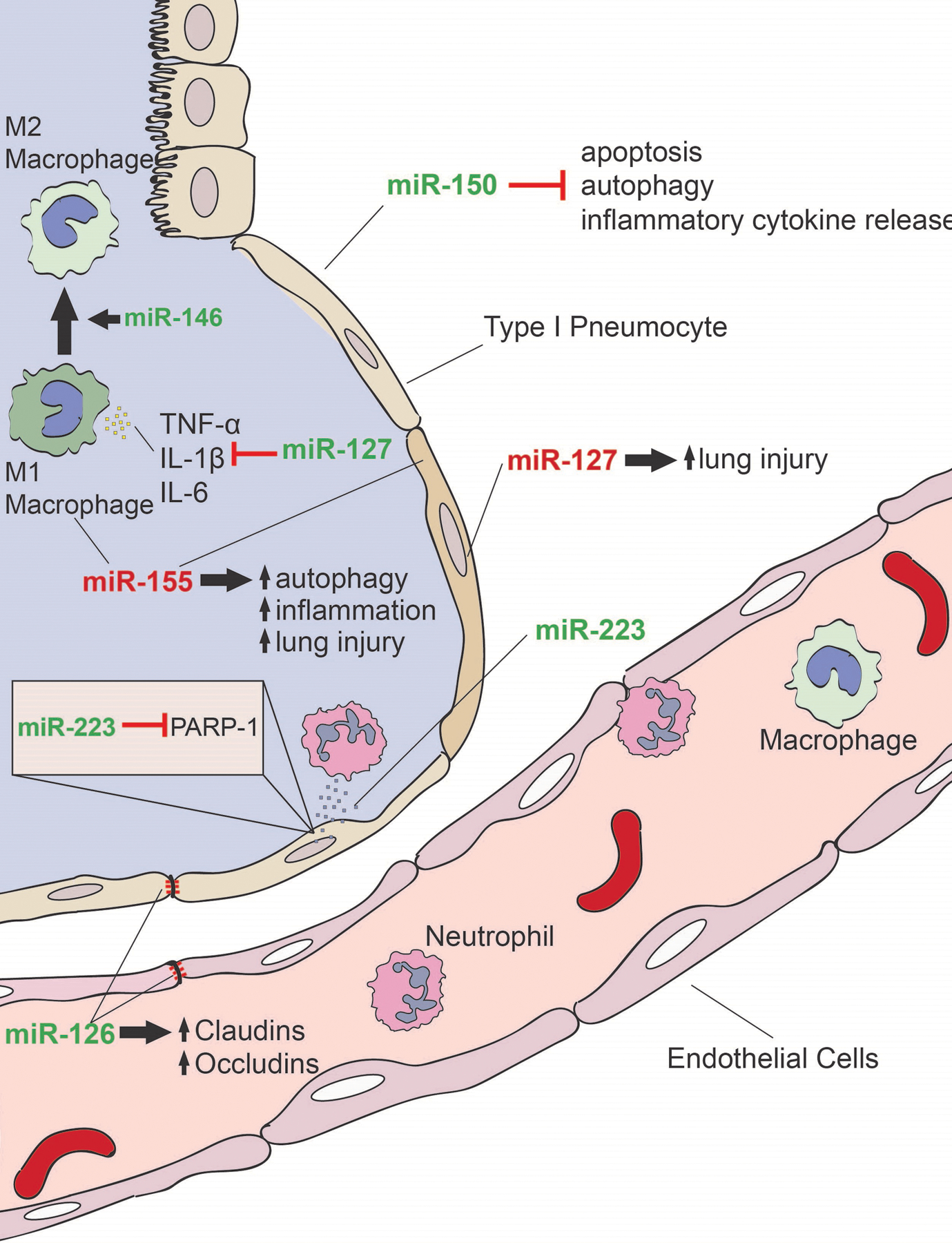Figure 2.

The role of miRNA in ARDS. A number of miRNAs have been demonstrated to play a role in the pathophysiology of ARDS. miRNA with predominately proinflammatory functions are denoted in red, while miRNA with predominately anti-inflammatory functions is denoted in green. miR-150 decreases cell apoptosis, autophagy, and release of inflammatory cytokines. miR-146 promotes the M2 phenotype in macrophages, promoting wound healing and tissue repair. miR-127 decreases production of TNF-α, IL-1β, and IL-6 decreasing severity of lung injury in vivo but has also been associated with lung injury with overexpression. miR-155 increased autophagy bodies in alveolar macrophages and lung tissue, promoting inflammation and injury. Shuttling of miR-223 from neutrophils to alveolar epithelial cells was protective against VILI, possibly mediated via repression of PARP-1 in epithelial cells. miR-126 promotes expression of claudins and occludins to improve epithelial and endothelial integrity. Therapeutic targeting of these miRNAs could potentially serve as novel treatment approaches for ARDS. ARDS indicates acute respiratory distress syndrome; IL, interleukin; miRNA, microRNA; PARP, poly(ADP-Ribose) polymerase 1; TNF-α, tumor necrosis factor α; VILI, ventilator-induced lung injury.
